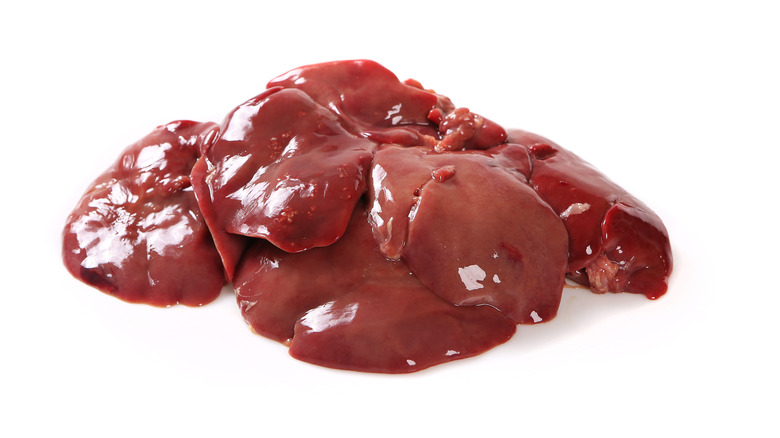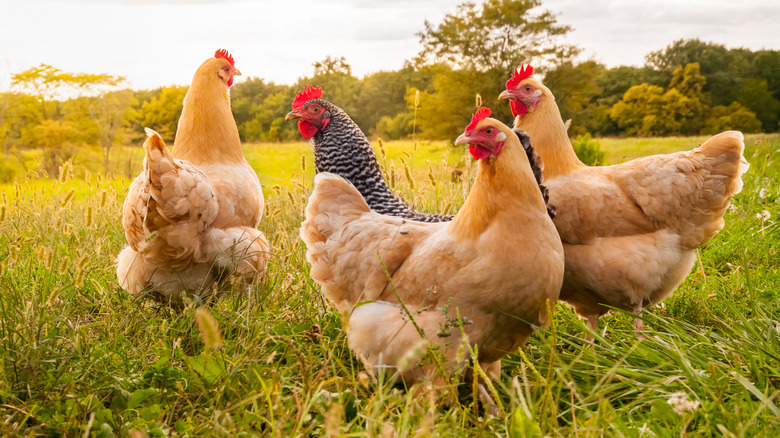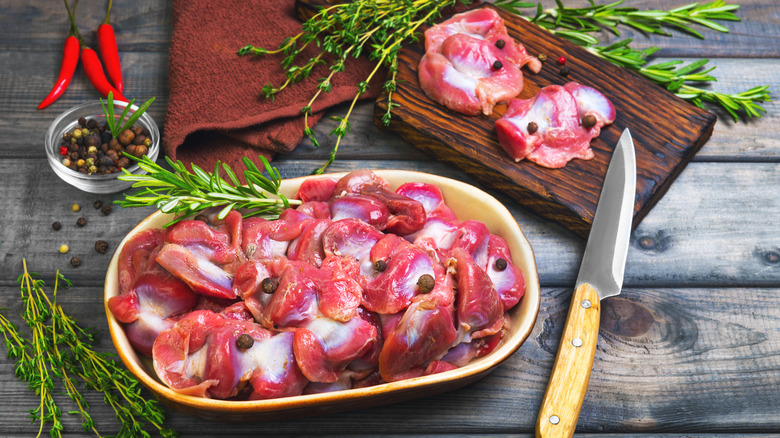Chicken Parts You're Not Eating But Should
When it comes to chicken, it seems most people seek out chicken breasts, drumsticks, or thighs at restaurants or the grocery store.
The majority of Americans prefer chicken breasts, and researchers believe there are a few reasons for this trend. First of all, the breast doesn't possess any characteristics that make people acutely aware that they're eating a chicken (via Slate). Eating a leg, on the other hand, makes the diner realize that they're eating an animal that used to able to walk and run around.
Researchers also believe that the older generation prefers not to eat chicken legs because of how they've evolved over time. Before the advent of factory farming, chickens moved more on a daily basis (like organically raised chickens still do) so the legs were potentially more chewy and muscular (via Eat Drink Rabbit). Muscles that are less used tend to be more tender. For instance, the filet mignon comes from a muscle on the back that isn't used by the cow, resulting in a soft cut of meat (via The Kitchn). But because chickens don't move around as much in industrial farming facilities, their leg muscles atrophy and they have become more tender than those of their predecessors.
But there's more to the chicken than the common parts available at the grocery store. Here are some other parts of the bird to try.
Chicken livers
Made into a spread for use on a sandwich or a bagel, baked, or thrown on the grill, livers are significantly more interesting than either white or dark meat. They're unapologetically gamey, have something of a grainy and paste-like texture, and have a jello-esque consistency when they're raw which can put some people off entirely (via Reddit).
Apart from their taste and texture, there's another thing that sets livers apart from light and dark meat of the chicken, which is that there are significantly more vitamins and minerals in them (via Nutrition Advance).
About 25 percent of the liver is protein, and a serving of chicken livers contain 281% of the recommended daily value of Vitamin B12, 267% of the recommended daily value of Vitamin A, 144% of the recommended daily value of folate, and 117% of the recommended daily value of Vitamin B2 as well as other nutrients.
Surprisingly, chicken livers also contain a decent amount of vitamin C at 47% of the recommended daily value. However, it's solely contained in the liver; chicken meat has no vitamin C.
Chicken tail
Chicken tail is a delicacy which might be difficult to find outside of Japanese yakitori restaurants. They are typically served by loading four or five on a skewer, then they're grilled and seasoned with lemon and sea salt or a soy sauce-based glaze or sauce (via Asian Recipe).
While they are loved by adventurous diners, they might be slightly more hard to stomach by those who have a more cautious palate. The tail contains the oil gland of the chicken, which gives this cut of chicken a significantly different flavor than the rest of the bird. While it's possible to remove it, most people prefer that it be left in.
However, the chicken tail is one of the fattiest parts of the animal, and should be eaten in moderation, as it doesn't contain the same beneficial vitamins and minerals as the tail (via South China Morning Post).
Chicken gizzards
Along the same line as the livers, chicken gizzards are an organ which serve as a component of the digestive tract. While mammals don't have gizzards, the organ is seen in all birds, as well as in certain reptiles, fish, and insects (via Mom.com). The gizzard helps to grind up the food before it makes its way to the stomach. It has the same deep, earthy flavor as the dark meat of the bird, but it has a significantly chewier and tougher texture. Like a chicken tail, they can also be grilled on a skewer, although braising them is another popular way to prepare the gizzards.
Because the gizzards contain significant amounts of connective tissues, care must be taken that they are cooked properly. Braising allows the tissues to melt and dissolve, although if the gizzards are cooked at too high a temperature they will tense up and cause the finished product to be rubbery and unpleasant.



